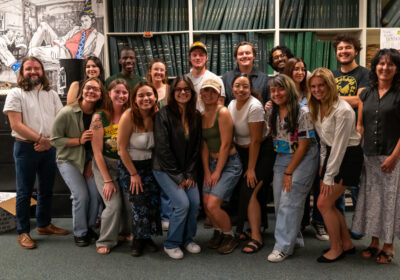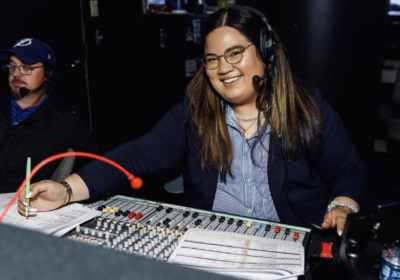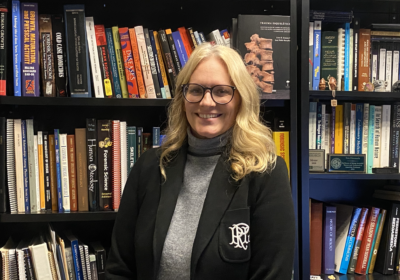Creating bodies of work
Once associated with sailors and military men, body art is growing in popularity across the American landscape – among students and venues in Tampa as well.
According to Google Maps, there are seven tattoo and body piercing shops located on Ybor City’s East Seventh Avenue alone.
Nationally, TV shows and documentaries such as TLC’s “Body Art” and The History Channel’s “In Search of History: The Art of Tattooing” have brought body art to the TV sets of millions of Americans.
Tattoo-inspired clothing brands like Ed Hardy – based on the designs of California body artist Don Ed Hardy – even offer children’s clothing.
Aaron Austin, a junior majoring in mass communications who has close to 40 tattoos, said that Ed Hardy’s success shows body art’s mainstream acceptance.
“I see tattoos becoming more commonplace,” Austin said. “You’ve got national TV shows based solely on tattoo artists’ lives. They can even market the clothing to people who don’t want a tattoo, but still like the idea of tattoos or the art form or art – like flash art – translated into clothing. That’s what Ed Hardy has done.”
Tattoo flash refers to premade designs available in body art shops.
Phil Holt, a tattooist at Redletter1 located at 1818 N. 15th St. in Ybor, said he paints flash art in the traditional sailor style and sells it to other shops.
“Shops owners draw, sell and trade flash,” Holt said. “That was the norm 15 to 20 years ago. Now custom shops are the mainstream.”
Redletter1 is a custom, appointment-based studio that creates individual tattoos requested by customers. Holt said the custom tattoos’ uniqueness adds to the ongoing debate of whether the practice is an art.
“Tattooing has always struggled to find where its place is,” Holt said. “It’s a hard line to tell.”
Holt’s custom tattoo creations on Redletter1’s website span from red skulls and Oriental dragons to floating carps. Yet, he said he does not call his own work art.
“Custom tattooing is not being an artist,” Holt said. “We’re more commercial illustrators. If you’re hired to do the job, it changes from art to illustration.”
Cherisse Rivera, a graduate student and assistant in mass communications, said she’s drawn some of her own tattoos – including her back piece – and considers them a form of personal expression.
“The ones that I consider as art are there because it’s my own personal things that I have drawn,” Rivera said. “Whether they’re perfect or not, they’re mine … my expression of creativity.”
Julissa Alvarado, a sophomore majoring in mass communications who has piercings in her nose, tongue, lips, ears and neck, said she considers body modification art as well.
“It would be art because your body is the canvas and you decorate it with different things,” Alvarado said.
However, Alvarado said she believes her body art has also created tensions in her life.
“I used to have four lip rings, and I guess that was too much for people,” Alvarado said. “I foresee in the future I’ll probably have to take most of them out.”
Rivera, Austin and Alvarado all expressed difficulties with their tattoos and piercings within the workplace.
“I’ve had experiences where I haven’t gotten a job I really wanted, and I know it was because of my tattoos,” Rivera said.
Some arguments go beyond whether tattoos or piercings should be considered art.
North Carolina high school student Ariana Iacono made newspaper headlines when she was suspended for refusing to remove her nose stud – a piercing she claimed was religious under the Church of Body Modification, a non-theistic faith that focuses on using body modification as a way of experiencing personal spirituality.
“It’s almost like people view your character as being flawed if you have flaws or imperfections in your skin,” Austin said. “Because people put art on their bodies, they’re viewed as social miscreants.”







